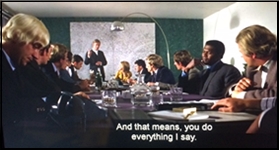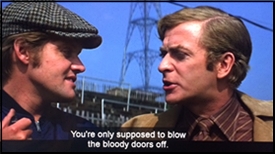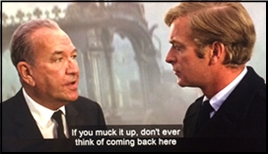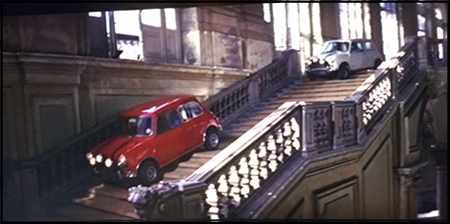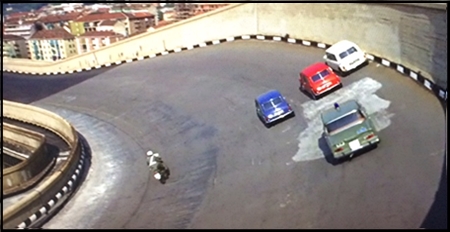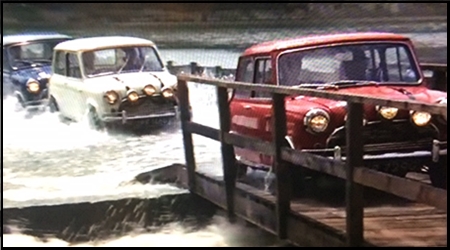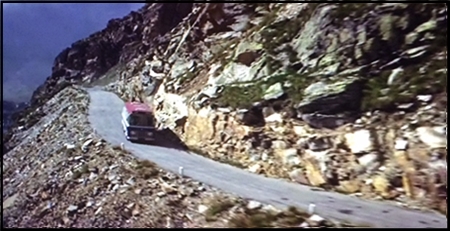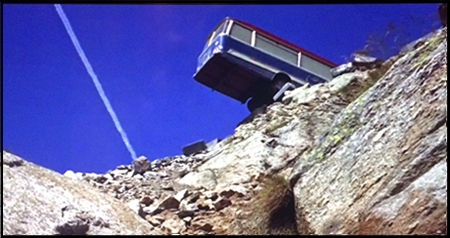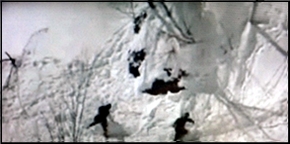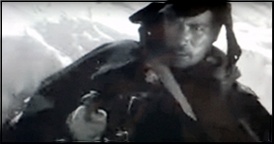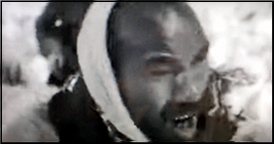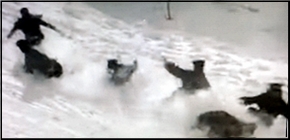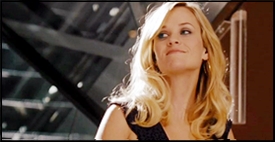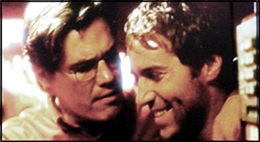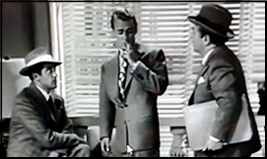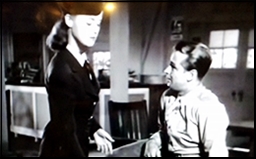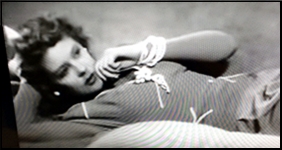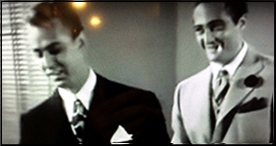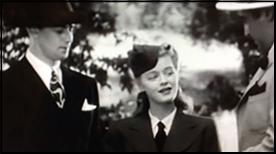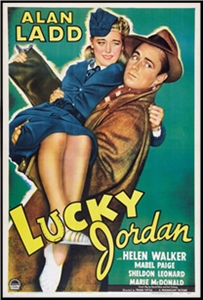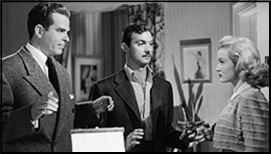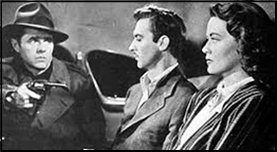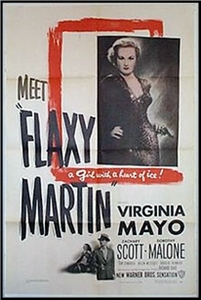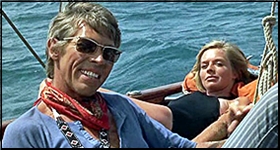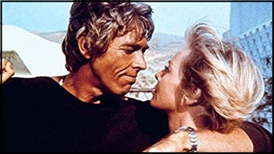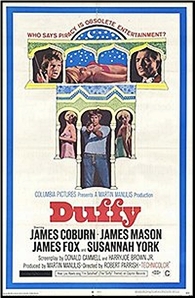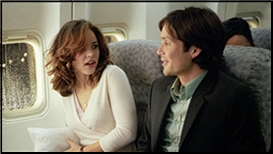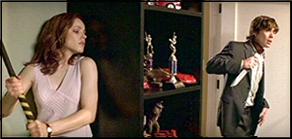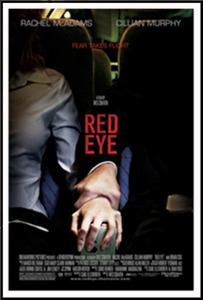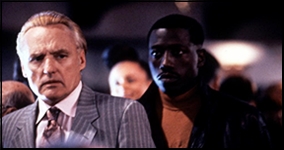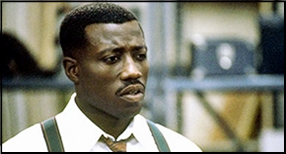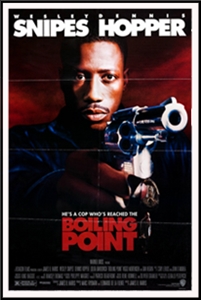Wed 6 Jan 2021
A Movie! Book!! Review by Dan Stumpf: HIS KIND OF WOMAN (1952).
Posted by Steve under Crime Films , Reference works / Biographies , Reviews[10] Comments
HIS KIND OF WOMAN. RKO, 1952. Robert Mitchum, Jane Russell, Vincent Price, Tim Holt, Raymond Burr, and Jim Backus. Written by Frank Fenton and Jack Leonard. Directed by John Farrow and Richard Fleischer (uncredited.) Available on DVD and for rent from Vudu and Amazon Prime, among others.
RICHARD FLEISCHER – Just Tell Me When to Cry. Carroll & Graf, hardcover, 1993.
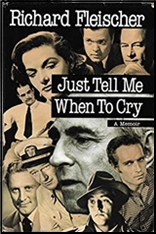
I always thought of HIS KIND OF WOMAN as a lop-sided little movie, no great shakes, but modestly enjoyable. I went out with a girl like that once. Then I read Fleischer’s memoir, and now I see it in a whole different light. A good book can do that for you.
Briefly, WOMAN deals with the travails of Dan Milner (Robert Mitchum) a down-on-his-luck gambler lured to a Mexican resort where everyone seems to be playing a part, except for the one genuine actor, Mark Cardigan (Vincent Price.)
Turns out the whole thing has been engineered by deported gangster Raymond Burr, who means to kill Mitchum and enter the country under his name. Yeah, it sounds over-complicated to me, too. I mean how hard can it be to get a slightly irregular passport? But that’s the story, and Bob ends up on Ray’s yacht, tied, tortured, running, fighting, running, shooting, running, ducking, and generally making mayhem in some remarkably grim moments, fraught with tension—
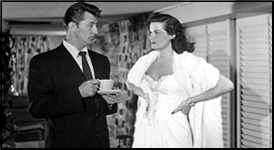
–Or they would be, except that the movie keeps cutting back to Vincent Price and his genuinely funny attempts at rescue. The comedy works, the grim stuff works, but side by side, they keep undercutting each other. I kind of like it myself, but I have to say on any objective level it just doesn’t work.
So like I say, I always thought of this as a fun little misfire, till I read Richard Fleischer’s engaging memoir, JUST TELL ME WHEN TO CRY, which devotes a whole chapter to WOMAN and reveals that the damn thing cost almost a million dollars.
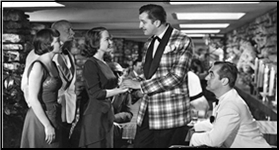
It seems director John Farrow finished this film, and like all RKO movies at the time, it went to studio owner Howard Hughes to be screened before release. Hughes thought the ending could be punched up a little, so he called Fleischer in, and Fleischer agreed, maybe it could. So Hughes made some suggestions, Fleischer fleshed them out, producer Robert Fellows added on to the yacht set, Hughes came up with more ideas, Fleischer did his thing, Fellows added on to the yacht, more ideas, more yacht, more funny business with Vincent Price, more shooting, more ideas….
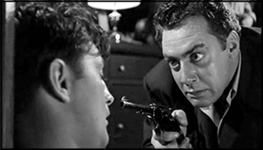
By the time they finished (they thought) the make-believe yacht filled the biggest soundstage at RKO, Vincent Price held a mock birthday party to celebrate his first year on the picture, Bob Mitchum went on a set-smashing rampage, Lee Van Cleef was judged unsuitable as the main heavy (Remember, the film was finished when this was decided.) an exhaustive search turned up Robert J Wilke as a replacement but after a few days work, Raymond Burr was hired on a whim from Hughes to re-shoot all the original footage done by Wilke and Van Cleef.
But at length Fleischer and Fellows screened the new ending, with the extensive and expensive yacht scenes, for their Boss – who wanted it all redone because the boarding ladder was on the wrong side!
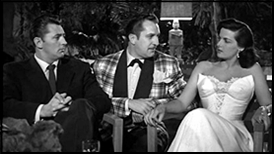
Now I never take any memoir as gospel — the form just allows too many temptations to promote oneself and settle old scores — but JUST TELL ME WHEN TO CRY can be read for sheer outrageous entertainment. Fleischer’s accounts of working with Walt Disney, Kirk Douglas, Rex Harrison and Howard Hughes (to name just a few) are laugh-out-loud funny, and he pauses now and then for pithy observations like:
“Hope deceives more people than cunning ever could.â€
“Directing is a democratic process in which everyone does just as I tell them to do.â€
And
“It’s easier to fool people than to convince them they have been fooled.â€
That last one seems particularly apt these days. And it’s just a sample from a book (and movie) I highly recommend.



